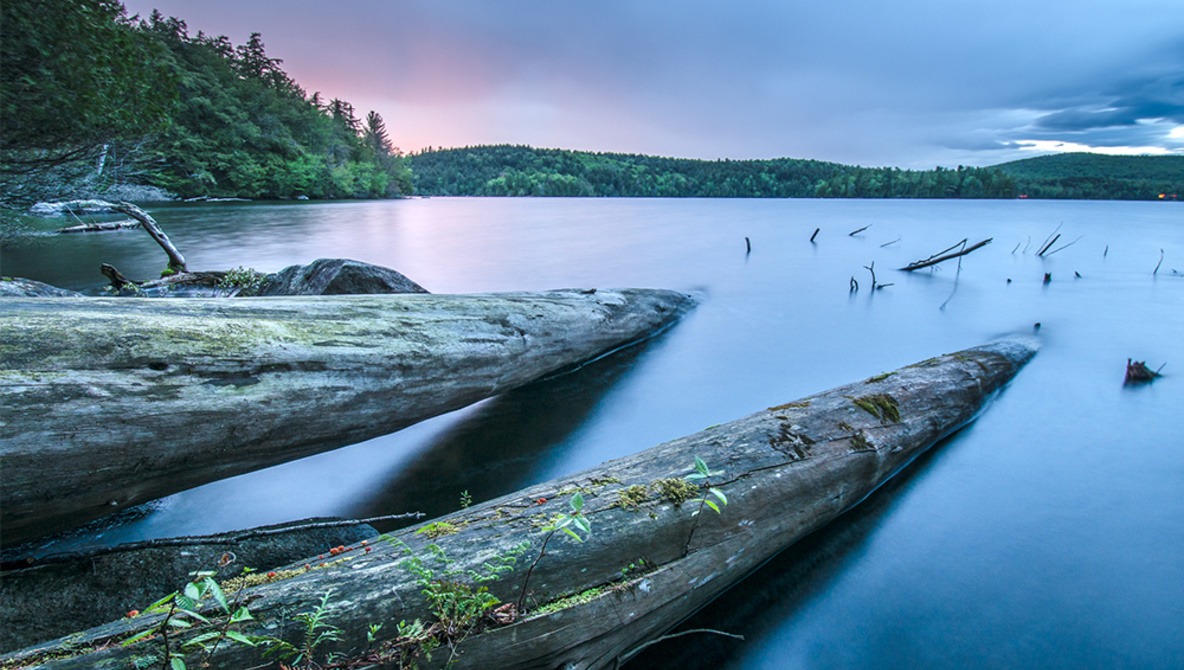Using photography as a conservation tool isn't a new idea. Photographers like Ansel Adams utilized the medium to help protect some of our country's most beautiful land. But imagine if Adams had the power of social media to help spread his conservation message to a larger audience.
New York State recently purchased from the Nature Conservancy a new parcel of land called the Boreas Ponds land tract within the Adirondack Park, the largest state park in the lower 48. When new land is acquired within the Adirondacks, the Adirondack Park Agency — a state government agency that acts on policy issues in the Park — determines the type of usage and access allowed on the land.
In this case, two different types of usage were backed: motorized access (wild forest) versus non-motorized access (wilderness). A wilderness classification is the most strict classification in terms of access a land parcel can receive, but it's arguably the best for fragile ecosystems as it restricts motor vehicles. Several different groups fought hard over the classification for over a year. But the Adirondack Park Agency recently shared its decision; a classification that many people are unhappy with.

A landscape photographer and founder of Adirondack Wilderness Advocates, Brendan Wiltse, is now reacting to the Adirondack Park Agency's classification decision with a powerful message via social media and photography.
#ADK1Mile is Wiltse's most recent project. It's a reaction to the classification decision, and the argument that more of the Adirondack Park should be open to motorized use because it's inaccessible. However, Wiltse disagrees. "I did a GIS analysis looking at the Adirondack Park — looking at what portions of the Park are what distances from a road or snowmobile trail," said Wiltse. "When I ran those numbers, what was really surprising to me is that just over 70 percent of the Park is within a mile from the road."

Wiltse thought it would be interesting to start a photo project that just focuses on places within that mile buffer to prove the point that a lot of beautiful places in the Adirondack Park lie within that area. Thus, #ADK1Mile was born.
This project is quite simple: share photos of locations within the Adirondack Park, telling how far it is from the nearest road or snowmobile trail and using the hashtag #ADK1Mile. In the end a gallery of photos will be available online through hashtag galleries, featuring beautiful locations around the Park that almost anyone can access and see for themselves.

Wiltse also hopes that this project will reinforce the idea that the future of accessibility isn't to open another road, but rather to make the places already within a mile from a road more friendly to people who cannot hike for miles into a wilderness area.
"I think it would be great if there was another hashtag or other photographers in other parts of the country followed a similar idea. Take for example a road being proposed in a remote area in Alaska or similar landscape," said Wiltse. "My hope is that it becomes much bigger than something I would do, and to create a community and gallery of photos relating to areas and their distance from a road."
All images were taken in the Adirondack Park within a mile from the road, and are used with the permission of Brendan Wiltse.







I'm sorry, but not every place needs to be accessible to those who can't hike. Sucks for them, and I do mean it without sarcasm. There's a lot of places better left alone, or better left scarcely accessed, and planning and difficulty to go there is a good protection.
I completely agree. Unfortunately, one of the attacks on our remote wild lands is this mantra that too much land is "locked up" and "inaccessible," which simply isn't supported by the facts. The Adirondack Park is one of the wildest places in the eastern US, yet 70% of the park is a short walk from a road, only 5% is greater than 3 miles, and less than 1% is greater than 5 miles.
I can see both sides of this argument and think the answer is somewhere in the middle. I feel like sadly, many people would just not care if these places went away if they weren't able to go experience them for themselves. 1 mile isn't usually going to be very invasive and in most cases would leave the park relatively unchanged while bringing people enjoyment and appreciation. You gotta get them to care if we're going to keep it.
I understand we need to get them to care enough to want to preserve it, of course. And I think the accessibility of this park is reasonable. There also needs to be places less accessible. Like, Bortle 1 on the scale of light pollution. Ecological reserves and such. Here in BC, one of my favourite places has been Churn Creek Protected Area. It's an ecological reserve that's arid. There's a road leading to it (80 km dirt road on the edge of a canyon), but it's possible to go really far in without being near a road. It's super quiet, you won't see many people at all. If you walk in, you can not see anyone for many days.
I'm convinced!